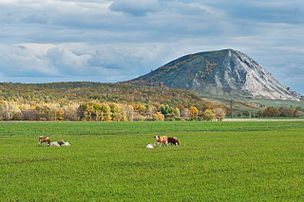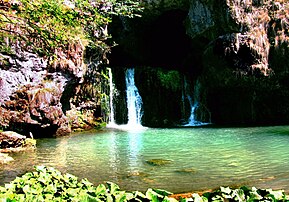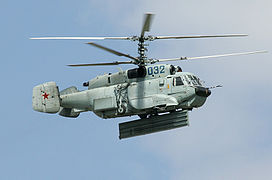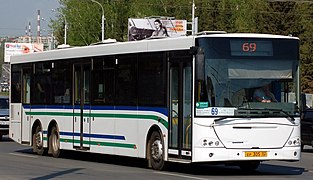Bashkortostan
Republic of Bashkortostan | |
|---|---|
| Республика Башкортостан | |
| Other transcription(s) | |
| • Bashkir | Башҡортостан Республикаһы |
| Anthem: State Anthem of the Republic of Bashkortostan[3] | |
 | |
| Country | Russia |
| Federal district | Volga[1] |
| Economic region | Urals[2] |
| Capital | Ufa |
| Government | |
| • Body | State Assembly[4] |
| • Head[4] | Rustem Khamitov[5] |
| Area | |
• Total | 143,600 km2 (55,400 sq mi) |
| • Rank | 27th |
| Population | |
• Total | 4,072,292 |
• Estimate (2018)[8] | 4,063,293 (−0.2%) |
| • Rank | 7th |
| • Density | 28/km2 (73/sq mi) |
| • Urban | 60.4% |
| • Rural | 39.6% |
| Time zone | UTC+5 (MSK+2 |
| ISO 3166 code | RU-BA |
| License plates | 02, 102 |
| OKTMO ID | 80000000 |
| Official languages | Russian;[10] Bashkir[11] |
| Website | http://www.bashkortostan.ru |
The Republic of Bashkortostan (Russian: Респу́блика Башкортоста́н, romanized: Respublika Bashkortostan, IPA: [rʲɪsˈpublʲɪkə bəʂkərtɐˈstan]; Template:Lang-ba, Başqortostan Respublikahı), also known as Bashkiria (Russian: Башки́рия, romanized: Bashkiriya, IPA: [bɐʂˈkʲirʲɪjə]) is a federal subject of Russia (a republic). It is located between the Volga River and the Ural Mountains. Its capital is the city of Ufa. With the population of 4,072,292 as of the 2010 Census, Bashkortostan is the most populous of the republics in Russia.[7]
Bashkurdistan, the first ethnic autonomy in Russia, was established on November 28 [O.S. November 15] 1917.[13][14][14][15] On March 23, 1919, it was transformed into the Bashkir ASSR,[12] the first Autonomous Soviet Republic in RSFSR.[16] Also Bashkortostan is the first formed republic in modern Russia.
In accordance with Constitution of Bashkortostan and Russian Federation Constitution Republic is a state (country), but has no sovereignty.[17][18] On 11 October 1990 Bashkortostan adopted the Declaration of State Sovereignty, but subsequently abandoned it. 11 October is a Republic Day in Bashkortostan.
The state has strong economic and cultural ties with its western neighbor the Republic of Tatarstan.[19][20][21]
Terminology
The name "Bashkortostan" derives from the name of the Bashkir ethnic group, also known as Bashkorts.[citation needed] While the root of the name is Turkic (being a combination of 'baş', which in Turkish can mean head, chief, main, principal, and 'kurt' meaning wolf, one of the animals regarded as sacred to Turkic peoples);[citation needed] the suffix -stan is Persian, common to many Eurasian country-names. They speak the Bashkir language, which belongs to the Kypchak branch of the Turkic languages.[citation needed]
History
The first settlements in the territory of modern Bashkortostan date from the early Paleolithic period, but the Bronze Age spurred an upsurge in the population of this territory.[22] When people of the Abashevo culture started settling here they possessed high skills in manufacturing bronze tools, weapons, and decorations. They were the first to establish permanent settlements in the Southern Urals.
Bashkortostan takes its name from its native people — the Bashkirs. The Russian (Slavonic) name of the country — Bashkiriya — formed at the end of the 16th century. Originally it appeared in the forms Bashkir’, Bashkirda and Bashkir horde. The first written references to Bashkir tribes appear in compositions of Herodotus (5th century BCE). The ethnonym Bashkirs first became known in the 9th century. In the 10th century, Al-Balkhi wrote about Bashkirs as a people, divided into two groups, one of which inhabited the Southern Urals, while the other lived near the Danube river, close to the boundaries of Byzantium. His contemporary Ibn-Ruste described the Bashkirs as "an independent people, occupying territories on both sides of the Ural mountain ridge between Volga, Kama, Tobol and upstream of Yaik river".
-
Cave paintings in the Shulgan-Tash
-
Mausoleum of Turahan, 14th-century building
-
Bashkirs near Hamburg during the Napoleonic Wars, c. 1813
-
The Red Army cavalry unit, made up of Bashkirs, Russian Civil War, 1919
After the early-feudal Mongolian state had broken down in the 14th century, the territory of modern Bashkortostan became divided between the Kazan and Siberia Khanates and the Nogai Horde. The tribes that lived there were headed by bi (tribal heads). After Kazan fell to Ivan the Terrible in 1554–1555, representatives of western and northwestern Bashkir tribes approached the Tsar with a request to voluntarily join Muscovy.[citation needed]
Starting from the second half of the 16th century, Bashkiria's territory began taking shape as a part of the Russian state. In 1798 the Spiritual Assembly of Russian Muslims was established[by whom?]— an indication that the tsarist Government recognized the rights of Bashkirs, Tatars, and other Muslim nations to profess Islam and perform religious rituals. Ufa Governorate (guberniya), with a center in Ufa, was formed in 1865— another step towards territorial identification.
After the Russian Revolution of 1917, the Bashkir Autonomous Soviet Socialist Republic (ASSR) was established on March 23, 1919;[12] first as Little Bashkortostan; eventually all of Ufa Governorate became incorporated into the newly established republic. During the Soviet period, Bashkiria was granted broad autonomous rights— the first among other Russian regions. The administrative structure of the Bashkir ASSR was based on principles similar to those of other autonomous republics of Russia.
The extraction of crude oil in Bashkiria began in 1932. At the end of 1943 large crude oil deposits were discovered.[by whom?] During the Great Patriotic War of 1941 to 1945, Bashkiria became one of the major regions of the Soviet Union to accommodate plants and factories evacuated from Western Russia, as well as great masses of people, while also providing the country with weaponry, fuel, and foodstuffs. After the war, a number of industries developed further in Bashkiria, such as mining, machine-building and (especially) oil-refining. Bashkiria's industry became a solid base for the further economic growth of all European outlying territories of Russia.
On October 11, 1990 the Supreme Soviet of the Republic adopted the Declaration on state sovereignty of the Bashkir ASSR. On February 25, 1992, the Bashkir ASSR was renamed[by whom?] the Republic of Bashkortostan.
On March 31, 1992, a Federative Compact "On separation of authorities and powers among federal organs of power of the Russian Federation and the organs of power of the Republic of Bashkortostan" was signed. On August 3, 1994, a Compact "On separation of authorities and mutual delegating of powers among the organs of power of the Russian Federation and the organs of power of the Republic of Bashkortostan" was signed.
Geography
Bashkortostan contains part of the southern Urals and the adjacent plains.
-
Shihan Toratau. Single hills are popular symbols of Bashkortostan
-
Atysh waterfall
-
Bashkir horses near Yakty-Kul lake
-
Autumn Yamantau
- Area: 143,600 square kilometers (55,400 sq mi) (according to the 2002 Census)
- Borders: Bashkortostan borders with Perm Krai (N), Sverdlovsk Oblast (NE), Chelyabinsk Oblast (NE/E/SE), Orenburg Oblast (SE/S/SW), the Republic of Tatarstan (W), and the Udmurt Republic (NW)
- Highest point: Mount Yamantau (1,638 m)
- Maximum North-South distance: 550 km
- Maximum East-West distance: over 430 km
Rivers

There are over 13,000 rivers in the republic. Many rivers are part of the deepwater transportation system of European Russia; they provide access to ports of the Baltic and Black seas.
Major rivers include:
- Belaya (Aghidhel) River (1,430 km)
- Ufa (Qaraidel) River (918 km)
- Sakmara River (760 km)
- Ik (Iq) River (571 km)
- Dyoma River (556 km)
- Ay River (549 km)
- Yuruzan River (404 km)
- Bystry Tanyp River (345 km)
- Sim River (239 km)
- Nugush River (235 km)
- Tanalyk River (225 km)
- Zilim River (215 km)
- Syun River (209 km)
Lakes
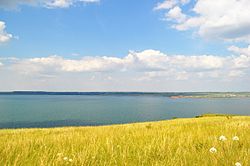
There are 2,700 lakes and reservoirs in the republic. Major lakes and reservoirs include:
- Asylykül Lake (23.5 km²)
- Qandrykül Lake (15.6 km²)
- Urgun Lake (12.0 km²)
- Pavlovskoye Reservoir (120.0 km²)
- Nugushkoye Reservoir (25.2 km²)
Mountains
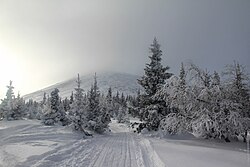
The republic contains part of the southern Urals, which stretch from the northern to the southern border. The highest mountains include:
- Mount Yamantau (1,638 m)
- Mount Bolshoy Iremel (1,582 m)
- Mount Maly Iremel (1,449 m)
- Mount Arwyakryaz (1,068 m)
- Mount Zilmerdaq (909 m)
- Mount Alataw (845 m)
- Mount Yurmataw (842 m)
Natural resources
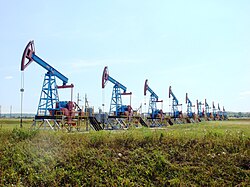

The Republic of Bashkortostan is one of the richest territories of Russia in mineral resources with deposits of some 3,000 mineral resources. Bashkortostan is rich in crude oil reserves, and was one of the principal centers of oil extraction in the Russian federation. Other major resources are natural gas, coal, ferrous metal ores, manganese, chromite, iron ores, non-ferrous metals ores (lead, tungsten), non-metallic ores (rock crystal, fluorite, iceland spar, sulfide pyrites, barite, silicates, silica, asbestos, talcum), deposits of precious and semi-precious stones and natural stones (malachite, jade, granite).
The republic has enough mineral resources to provide its power and fuel complex as well as petro-chemical, chemical, agro-industrial complex, ferrous and non-ferrous metallurgy, glass-making and ceramic branches with raw materials.
Bashkortostan is one of the major raw materials bases for Russia non-ferrous metallurgy. The republic has good deposits of lignite with a high degree of bitumenosity. This lignite can be used for obtaining a variety of different chemical products like resins, surface-active substances, gummy fertilizers, and other stimulants for plants growth. Mining-chemical raw materials (rock salt, lime, phosphorites, barytes, etc.) are quite substantial, and are utilized in the republic economy.
Bashkortostan is also rich in woods. The total territory covered with forests is about 62,000 square kilometers (24,000 sq mi). More than one third of the republic territory is covered with woods. The following types of trees dominate: birch tree, conifers, lime, oak, and maple. The general stock of timber according to some evaluation is 717.9 million m³. Bashkortostan forests have special sanctuaries and national parks. They cover more than 10,000 square kilometers (3,900 sq mi).
Bashkortostan is also rich in springs and sources of mineral, medicinal, and drinking water.
Climate
- Average annual temperature: +0.3 °C (32.5 °F) (mountains) to +2.8 °C (37.0 °F) (plains)
- Average January temperature: −16 °C (3 °F)
- Average July temperature: +18 °C (64 °F)
Administrative divisions
Politics

The head of the government of the Republic of Bashkortostan is the Head (before 1 January 2015 title was called President[23]), who is elected by the people for a four-year term. According to the Constitution, the Head of the Republic of Bashkortostan guarantees rights and liberties of the country's people and citizens, protects economic and political interests of the Republic of Bashkortostan, and secures legitimacy, law and order within its territory.
Rustem Khamitov assumed office on July 19, 2010. His predecessor was Murtaza Rakhimov, elected on December 17, 1993. Before the elections, Rakhimov was the Chairman of the Supreme Soviet of the Republic— the highest post at that time. Rakhimov was re-elected in December 2003 in a poll condemned by the OSCE for exhibiting "elements of basic fraud."
The Republic's parliament is the State Assembly—Kurultai, popularly elected every five years. The one-chamber State Assembly has 120 deputies.
The Republic's Constitution was adopted on December 24, 1993. Article 1 of the Constitution stipulates that Bashkortostan is a sovereign state within Russia, it has state power beyond the limits of authority of the Russian Federation and the powers of the Russian Federation concerning the aspect of joint authority of the Russian Federation and the Republic of Bashkortostan. The Republic of Bashkortostan is a full-fledged subject of the Russian Federation on equal and agreed bases.
The relations of the Republic of Bashkortostan and the Russian Federation are at present based on the articles of the Constitution of the Russian Federation, the Constitution of the Republic of Bashkortostan, the Federative Treaty (with amendments), and the Agreement on Separation of authorities and powers and mutual delegating of powers among the organs of state power of the Republic of Bashkortostan.
The judicial power of the republic is in the hands of the Constitutional Court, the Supreme Court, the Court of Appeals, district Courts, and justices of the peace.
In full accord with universally recognized principles of international law, articles of the European Charter of Local Self-Government and the Constitution of the Russian Federation, the Republic of Bashkortostan ensures in its Constitution that local self-government is recognized and guaranteed within the republic's territory.
The Republic of Bashkortostan resolves all issues of administrative-territorial structure on its own. The list of districts and towns, municipalities, as well as the order of establishing, amending and changing borders of municipalities and their names are stipulated by the Republic of Bashkortostan law "On administrative-territorial structure of the Republic of Bashkortostan and territory of municipalities".
The state has strong ties with its neighbor Tatarstan.[24][25]
Economy

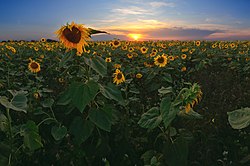
Bashkortostan is one of the most developed regions of the Russian Federation in terms of its gross regional output, volume of industrial production, agricultural production, and investment in fixed assets.
The economy of Bashkortostan, being one of the largest industrial centers of Russia, is very diverse. Bashkortostan has a large agricultural sector. But the republic's most important industry is chemical processing; Bashkortostan produces more oil than any other region of Russia, about 26 million tons annually, and provides 17% of the country's gasoline and 15% of its diesel fuel. Other important products manufactured in Bashkortostan include alcohols, pesticides and plastics.
The republic's gross regional product in 2014 was 1 trillion 343.9 billion rubles,[26] 9th place. State has a positive trade balance, 13.7 $ billion of export and 1.2 $ billion of import (2013).[27] Republic occupies the first place in Russia by share of profitable enterprises, 82.9% of enterprises are profitable,[28] the average value for Russia is 68.42%. Bashkortostan recognized as a subject with the lowest economic risk.[29][30]
Bashkortostan is among the leaders in real estate development,[31] has a developed electric power industry[32] and tourism.[33]
According to Forbes the capital of republic, Ufa is the best city in Russia for business among cities with population over one million (2013).[34]
Structure of GRP
GRP structure of Bashkortostan for 2013.[35]
| Sector | % |
|---|---|
| Manufacturing | 36.2 |
| Wholesale and retail trade | 16.7 |
| Transport and communications | 7.3 |
| Real estate transactions | 7 |
| Construction | 6.9 |
| Agriculture | 6.5 |
| Education | 4.1 |
| Healthcare and social services | 4.1 |
| State management and social insurance | 3.8 |
| Mining | 2.8 |
| Production of electricity, gas, water | 2.4 |
| Hotels and restaurants | 1.1 |
| Other | 1.1 |
- Some industrial products of Bashkortostan
-
Nefaz-VDL bus of Neftekamsk Automotive Plant
Demographics

Population development
| Year | Population |
|---|---|
| 1897 | 1,991,000 |
| 1913 | 2,811,000 |
| 1926 | 2,547,000 |
| 1939 | 3,158,000 |
| 1959 | 3,340,000 |
| 1970 | 3,818,000 |
| 1979 | 3,849,000 |
| 1989 | 3,950,482[36] |
| 2002 | 4,104,336[37] |
| 2010 | 4,072,292[7] |
Vital statistics
| Average population (x 1000) | Live births | Deaths | Natural change | Crude birth rate (per 1000) | Crude death rate (per 1000) | Natural change (per 1000) | Total fertility rate | |
|---|---|---|---|---|---|---|---|---|
| 1970 | 3,817 | 63,498 | 28,004 | 35,494 | 16.6 | 7.3 | 9.3 | |
| 1975 | 3,825 | 63,096 | 31,802 | 31,294 | 16.5 | 8.3 | 8.2 | |
| 1980 | 3,850 | 67,743 | 36,067 | 31,676 | 17.6 | 9.4 | 8.2 | |
| 1985 | 3,868 | 76,839 | 39,101 | 37,738 | 19.9 | 10.1 | 9.8 | |
| 1990 | 3,952 | 63,899 | 38,157 | 25,742 | 16.2 | 9.7 | 6.5 | |
| 1991 | 3,975 | 58,240 | 39,638 | 18,602 | 14.7 | 10.0 | 4.7 | |
| 1992 | 4,005 | 53,271 | 43,539 | 9,732 | 13.3 | 10.9 | 2.4 | |
| 1993 | 4,030 | 46,772 | 50,738 | -3,966 | 11.6 | 12.6 | -1.0 | |
| 1994 | 4,050 | 47,296 | 54,267 | -6,971 | 11.7 | 13.4 | -1.7 | |
| 1995 | 4,074 | 45,622 | 51,734 | -6,112 | 11.2 | 12.7 | -1.5 | |
| 1996 | 4,091 | 45,228 | 49,600 | -4,372 | 11.1 | 12.1 | -1.1 | |
| 1997 | 4,103 | 43,776 | 49,354 | -5,578 | 10.7 | 12.0 | -1.4 | |
| 1998 | 4,113 | 44,465 | 48,470 | -4,005 | 10.8 | 11.8 | -1.0 | |
| 1999 | 4,119 | 41,368 | 52,608 | -11,240 | 10.0 | 12.8 | -2.7 | |
| 2000 | 4,117 | 41,642 | 53,550 | -11,908 | 10.1 | 13.0 | -2.9 | |
| 2001 | 4,112 | 42,793 | 55,001 | -12,208 | 10.4 | 13.4 | -3.0 | |
| 2002 | 4,104 | 45,481 | 57,836 | -12,355 | 11.1 | 14.1 | -3.0 | |
| 2003 | 4,095 | 45,583 | 58,237 | -12,654 | 11.1 | 14.2 | -3.1 | |
| 2004 | 4,084 | 45,733 | 57,726 | -11,993 | 11.2 | 14.1 | -2.9 | |
| 2005 | 4,074 | 44,094 | 57,787 | -13,693 | 10.8 | 14.2 | -3.4 | |
| 2006 | 4,064 | 45,055 | 55,319 | -10,264 | 11.1 | 13.6 | -2.5 | |
| 2007 | 4,060 | 51,453 | 55,144 | -3,691 | 12.7 | 13.6 | -0.9 | |
| 2008 | 4,059 | 54,493 | 55,568 | -1,075 | 13.4 | 13.7 | -0.3 | |
| 2009 | 4,062 | 55,587 | 53,227 | 2,360 | 13.7 | 13.1 | 0.6 | 1,74 |
| 2010 | 4,067 | 57,093 | 54,457 | 2,636 | 14.0 | 13.4 | 0.6 | 1,77 |
| 2011 | 4,072 | 55,806 | 54,432 | 1,374 | 13.7 | 13.4 | 0.3 | 1,74 |
| 2012 | 4,064 | 59,180 | 53,624 | 5,556 | 14.6 | 13.2 | 1.4 | 1.86 |
| 2013 | 4,065 | 59,260 | 53,346 | 5,914 | 14.6 | 13.1 | 1.5 | 1.89 |
| 2014 | 4,071 | 60,239 | 53,509 | 6,730 | 14.8 | 13.1 | 1.7 | 1.95 |
| 2015 | 4,072 | 59,196 | 54,107 | 5,087 | 14.5 | 13.3 | 1.2 | 1.94(e) |
Note: Total fertility rate 200-12 source.[38]
Ethnic groups

According to the 2010 Census, the ethnic composition was:[7]
- Russian 36.1%
- Bashkir 29.5%
- Volga Tatars 25.4%
- Chuvash 2.7%
- Mari 2.6%
- Ukrainian 1%
- Mordovian 0.5%
- Udmurt 0.5%
- Belarusians 0.3%
| Ethnic group |
1926 Census | 1939 Census | 1959 Census | 1970 Census | 1979 Census | 1989 Census | 2002 Census | 2010 Census1 | ||||||||
|---|---|---|---|---|---|---|---|---|---|---|---|---|---|---|---|---|
| Number | % | Number | % | Number | % | Number | % | Number | % | Number | % | Number | % | Number | % | |
| Bashkirs | 625,845 | 23.5% | 671,188 | 21.2% | 737,744 | 22.1% | 892,248 | 23.4% | 935,880 | 24.3% | 863,808 | 21.9% | 1,221,302 | 29.8% | 1,172,287 | 29.5% |
| Russians | 1,064,707 | 39.9% | 1,281,347 | 40.6% | 1,418,147 | 42.4% | 1,546,304 | 40.5% | 1,547,893 | 40.3% | 1,548,291 | 39.3% | 1,490,715 | 36.3% | 1,432,906 | 36.1% |
| Tatars | 621,158 | 23.3% | 777,230 | 24.6% | 768,566 | 23.0% | 944,505 | 24.7% | 940,436 | 24.5% | 1,120,702 | 28.4% | 990,702 | 24.1% | 1,009,295 | 25.4% |
| Chuvash | 84,886 | 3.2% | 106,892 | 3.4% | 109,970 | 3.3% | 126,638 | 3.3% | 122,344 | 3.2% | 118,509 | 3.0% | 117,317 | 2.9% | 107,450 | 2.7% |
| Mari | 79,298 | 3.0% | 90,163 | 2.9% | 93,902 | 2.8% | 109,638 | 2.9% | 106,793 | 2.8% | 105,768 | 2.7% | 105,829 | 2.6% | 103,658 | 2.6% |
| Ukrainians | 76,710 | 2.9% | 99,289 | 3.1% | 83,594 | 2.5% | 76,005 | 2.0% | 75,571 | 2.0% | 74,990 | 1.9% | 55,249 | 1.3% | 39,875 | 1.0% |
| Others | 113,232 | 4.2% | 132,860 | 4.2% | 129,686 | 3.9% | 122,737 | 3.2% | 115,363 | 3.0% | 111,045 | 2.8% | 118,856 | 2.9% | 109,249 | 2.7% |
| 1 97,572 people were registered from administrative databases, and could not declare an ethnicity. It is estimated that the proportion of ethnicities in this group is the same as that of the declared group.[39] | ||||||||||||||||
Religion

Islam is adhered to by a plurality of the nation's population[42] of Bashkir and Tatar descent. The Muslims of Bashkortostan follow Sunni Hanafi school of Islamic law.
Most ethnic Russians, Chuvash and Ukrainians are Orthodox Christians. Most Mari are Pagan. Non-religious people form a substantial part of any ethnic group in Bashkortostan. There are 13,000 Jews in the republic, with a historic synagogue in Ufa, and a new Jewish Community Center built in 2008.[43]
According to a 2012 official survey[40] 38% of the population of Bashkortostan is Muslim, 25.2% adheres to the Russian Orthodox Church, 3% are unaffiliated generic Christians, 1% are Orthodox Christian believers without belonging to any church or members of other Orthodox churches, and 2% are adherents of the Slavic native faith (Rodnovery), the Mari native religion, or Tengrism. In addition, 15% of the population declares to be "spiritual but not religious", 8% is atheist, and 7.8% follows other religions or did not give an answer to the question.[40]
For 2010, there are over 1,000 mosques in Bashkortostan,[44] 200 Orthodox churches and 60 religious buildings of other confessions.[45]
Languages
Spoken languages: Russian (50%), Tatar (30%), Bashkir (20%).[46]
Sport
KHL team Salavat Yulaev Ufa plays in the city, as does Russian Major League team Toros Neftekamsk, and Minor Hockey League team Tolpar Ufa.
Education
About sixty scientific organizations are active in the republic. Fundamental and applied scientific research is under way at twelve institutes of the Russian Academy of Sciences, twenty-nine institutes of different branches of industry, as well as numerous design bureaus and organizations, universities, and colleges.
The country's system of popular education took shape over many centuries and reflects the Bashkir people's folklore, national customs, and traditions. When Islam spread in Bashkiria in the 10th century, an educational system began to emerge gradually— primarily religious schools operated under the supervision of mosques (maktabeh and madrasah).
In addition, many institutions of higher education operate in the republic, including branches of 16 leading Russian universities and colleges. Specialists graduate with degrees in about 200 trades and professions.
Education is primarily in Russian and Bashkir.
Culture

Bashkortostan is one of the largest cultural centers of Russia[citation needed].
In addition, Bashkortostan is home to song and dance companies, a network of national theaters, museums, and libraries, and a number of annual folk festivals. The republic has seven Bashkir, four Russian, and two Tatar State Drama Theaters, a State Opera and Ballet Theater, a National Symphony Orchestra, "Bashkortostan" film studio, thirty philharmonic collectives, and the Bashkir State Folk Dance Ensemble.
The Bashkir School of Dance is well respected[citation needed], with many students receiving international awards at competitions in Russia and other countries. World-renowned ballet dancer Rudolf Nureyev, as a child, was encouraged to dance in Bashkir folk performances, and began his dancing career in Ufa.
Bakshir literature is the literary tradition of the Republic of Bashkortostan.[47][48][49]
Panoramas


See also
References
Notes
- ^ Президент Российской Федерации. Указ №849 от 13 мая 2000 г. «О полномочном представителе Президента Российской Федерации в федеральном округе». Вступил в силу 13 мая 2000 г. Опубликован: "Собрание законодательства РФ", No. 20, ст. 2112, 15 мая 2000 г. (President of the Russian Federation. Decree #849 of May 13, 2000 On the Plenipotentiary Representative of the President of the Russian Federation in a Federal District. Effective as of May 13, 2000.).
- ^ Госстандарт Российской Федерации. №ОК 024-95 27 декабря 1995 г. «Общероссийский классификатор экономических регионов. 2. Экономические районы», в ред. Изменения №5/2001 ОКЭР. (Gosstandart of the Russian Federation. #OK 024-95 December 27, 1995 Russian Classification of Economic Regions. 2. Economic Regions, as amended by the Amendment #5/2001 OKER. ).
- ^ Law #10-z
- ^ a b Constitution of the Republic of Bashkortostan, Article 6
- ^ Official website of the Head of the Republic of Bashkortostan. Biography Template:Ru icon
- ^ "Сведения о наличии и распределении земель в Российской Федерации на 01.01.2019 (в разрезе субъектов Российской Федерации)". Federal Service for State Registration, Cadastre and Cartography. Archived from the original on February 9, 2022. Retrieved August 29, 2023.
- ^ a b c d Russian Federal State Statistics Service (2011). Всероссийская перепись населения 2010 года. Том 1 [2010 All-Russian Population Census, vol. 1]. Всероссийская перепись населения 2010 года [2010 All-Russia Population Census] (in Russian). Federal State Statistics Service.
- ^ "26. Численность постоянного населения Российской Федерации по муниципальным образованиям на 1 января 2018 года". Federal State Statistics Service. Retrieved January 23, 2019.
- ^ "Об исчислении времени". Официальный интернет-портал правовой информации (in Russian). June 3, 2011. Retrieved January 19, 2019.
- ^ Official throughout the Russian Federation according to Article 68.1 of the Constitution of Russia.
- ^ Constitution of the Republic of Bashkortostan, Article 1
- ^ a b c Administrative-Territorial Structure of the Union Republics. 1987., p. 25
- ^ Национально-государственное устройство Башкортостана, 1917-1925 гг: Общее введение и Том 1 // Билал Хамитович Юлдашбаев, Китап, 2002, ISBN 5295029166, 9785295029165
- ^ a b Хрестоматия по истории Башкортостана: Документы и материалы с древнейших времен до 1917 года // Фарит Гумеров, "Китап", 2001
- ^ Зулькарнаева Е. З., Кульшарипова Н. М. Фарман. // Башкортостан: краткая энциклопедия. — Уфа: Башкирская энциклопедия, 1996. — С. 603. — 672 с. — ISBN 5-88185-001-7.
- ^ БСЭ т.4 1950 год стр 347
- ^ "President of Russia". Retrieved January 24, 2016.
- ^ "Конституция Республики Башкортостан от 24 декабря 1993 г. N ВС-22/15 / Глава 1. Основы конституционного строя Республики Башкортостан". Retrieved January 24, 2016.
- ^ "Просмотр публикации : Республика Татарстан". Retrieved January 24, 2016.
- ^ 127-creatiVe. "IslamRF.ru: Татарстан и Башкортостан в первой половине 2012-го года: от альянса в экономике к сотрудничеству в сферах языка и религии". Retrieved January 24, 2016.
{{cite web}}: CS1 maint: numeric names: authors list (link) - ^ "Президент РТ". Retrieved January 24, 2016.
- ^ Главархитектура г. Уфы — История г. Уфы
- ^ "Парламентарии Башкирии приняли Закон "О Главе Республики Башкортостан"". Bashinform NA. December 25, 2014. Retrieved January 8, 2015.
- ^ "Education Reform in Tatarstan and Bashkortostan: Sovereignty Projects in Post-Soviet Russia". Retrieved January 24, 2016.
- ^ "Mintimer Shaimiev". Retrieved January 24, 2016.
- ^ ВРП Башкирии в 2014 году преодолел новый рубеж — 1,3 трлн рублей
- ^ "Республика Башкортостан в цифрах и фактах". Retrieved January 24, 2016.
- ^ Рейтинг социально-экономического положения субъектов РФ. Итоги 2014 года
- ^ "Вести.Ru: Башкортостан признан регионом с минимальными экономическими рисками". vesti.ru. Retrieved January 24, 2016.
- ^ "Title". Retrieved January 24, 2016.
- ^ "Ввод жилья в России - 2014: рейтинг регионов по итогам III квартала". Retrieved January 24, 2016.
- ^ "Сайт газеты "Республика Башкортостан" - Экономика - "Позеленеет" ли энергетика?". Retrieved January 24, 2016.
- ^ "Республика Башкортостан". Retrieved January 24, 2016.
- ^ 30 лучших городов для бизнеса — 2013 // Forbes.ru
- ^ Мировой атлас данных. Республика Башкортостан. Структура ВРП
- ^ Всесоюзная перепись населения 1989 г. Численность наличного населения союзных и автономных республик, автономных областей и округов, краёв, областей, районов, городских поселений и сёл-райцентров [All Union Population Census of 1989: Present Population of Union and Autonomous Republics, Autonomous Oblasts and Okrugs, Krais, Oblasts, Districts, Urban Settlements, and Villages Serving as District Administrative Centers]. Всесоюзная перепись населения 1989 года [All-Union Population Census of 1989] (in Russian). Институт демографии Национального исследовательского университета: Высшая школа экономики [Institute of Demography at the National Research University: Higher School of Economics]. 1989 – via Demoscope Weekly.
- ^ Federal State Statistics Service (May 21, 2004). Численность населения России, субъектов Российской Федерации в составе федеральных округов, районов, городских поселений, сельских населённых пунктов – районных центров и сельских населённых пунктов с населением 3 тысячи и более человек [Population of Russia, Its Federal Districts, Federal Subjects, Districts, Urban Localities, Rural Localities—Administrative Centers, and Rural Localities with Population of Over 3,000] (XLS). Всероссийская перепись населения 2002 года [All-Russia Population Census of 2002] (in Russian).
- ^ "Каталог публикаций::Федеральная служба государственной статистики". Retrieved January 24, 2016.
- ^ "ВПН-2010". Retrieved January 24, 2016.
- ^ a b c Arena - Atlas of Religions and Nationalities in Russia. Sreda.org
- ^ 2012 Survey Maps. "Ogonek", № 34 (5243), 27/08/2012. Retrieved 24-09-2012.
- ^ "islamonline.com". Retrieved January 24, 2016.
- ^ "Bashkortostan Jews Centered", Dateline World Jewry, World Jewish Congress, July/August 2008
- ^ "Интерфакс-Религия: Говорить о притеснении ислама в России кощунственно, считает Талгат Таджуддин". Retrieved January 24, 2016.
- ^ "25.08.2010 :: События :: Духовное управление мусульман Республики Башкортостан - Официальный сайт". Retrieved January 24, 2016.
- ^ Russian Census 2002. 6. Владение языками (кроме русского) населением отдельных национальностей по республикам, автономной области и автономным округам Российской Федерации(Knowledge of languages other than Russian by the population of republics, autonomous oblast and autonomous districts)Template:Ru icon
- ^ Allen J. Frank (2012). Bukhara and the Muslims of Russia: Sufism, Education, and the Paradox of Islamic Prestige. Brill. p. 11. Retrieved March 27, 2014.
Tatar and Bashkir literary works constitute a particularly rich body of indigenous historical sources of Inner Asia, particularly for the nineteenth and twentieth centuries
- ^ Julie Kavanagh (2011). Nureyev: The Life. Random House. p. 51. Retrieved March 27, 2014.
A celebration of Bashkirian Literature and Art to be held in Moscow..
- ^ Christopher Barnes (2004). Boris Pasternak: A Literary Biography, Volume 2. Cambridge University Press. p. 118. Retrieved March 27, 2014.
The main themes of the meeting were the discussion of the state of Byelorussian and Bakshirian literature..
Sources
- №ВС-22/15 24 декабря 1993 г. «Конституция Республики Башкортостан», в ред. Закона №57-з от 4 марта 2014 г. «О внесении изменений и дополнений в Конституцию Республики Башкортостан». Опубликован: "Ведомости Верховного Совета и Правительства Республики Башкортостан", №4-22, ст.146, 1994. (#VS-22/15 December 24, 1993 Constitution of the Republic of Bashkortostan, as amended by the Law #57-z of March 4, 2014 On Amending and Supplementing the Constitution of the Republic of Bashkortostan. ).
- Государственное Собрание Республики Башкортостан. Закон №10-з от 6 июля 1999 г. «О государственной символике Республики Башкортостан», в ред. Закона №98-з от 29 мая 2014 г. «О внесении изменений в Закон Республики Башкортостан "О государственной символике Республики Башкортостан"». Вступил в силу со дня официального опубликования (14 июля 1999 г.). Опубликован: Газета "Советская Башкирия - Известия Башкортостана", №136 (24364), 14 июля 1999 г. (State Assembly of the Republic of Bashkortostan. Law #10-z of July 6, 1999 On the State Symbols of the Republic of Bashkortostan, as amended by the Law #98-z of May 29, 2014 On Amending the Law of the Republic of Bashkortostan "On the State Symbols of the Republic of Bashkortostan". Effective as of the day of the official publication (July 14, 1999).).
- "СССР. Административно-территориальное деление союзных республик. 1987." (USSR. Administrative-Territorial Structure of the Union Republics. 1987) / Составители В. А. Дударев, Н. А. Евсеева. — М.: Изд-во «Известия Советов народных депутатов СССР», 1987. — 673 с.
Further reading
- Ilishev, Ildus G. (December 1998). "Russian federalism: Political, legal, and ethnolingual aspects — a view from the republic of Bashkortostan". Nationalities Papers. 26 (4): 723–759. doi:10.1080/00905999808408597.
External links
- Official website of Bashkortostan Template:Ru icon
- The Head of Republic of Bashkortostan
- Official website on the 450th anniversary of Bashkortostan's voluntary joining Russia
- International presentation of Bashkortostan Republic in UNESCO
- Bashkortostan export portal







